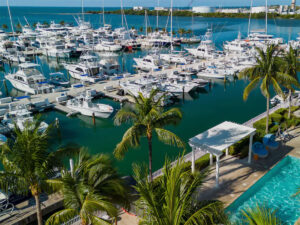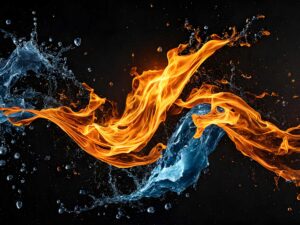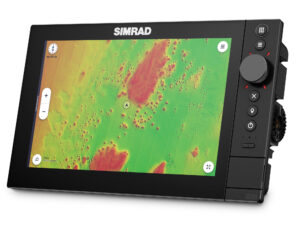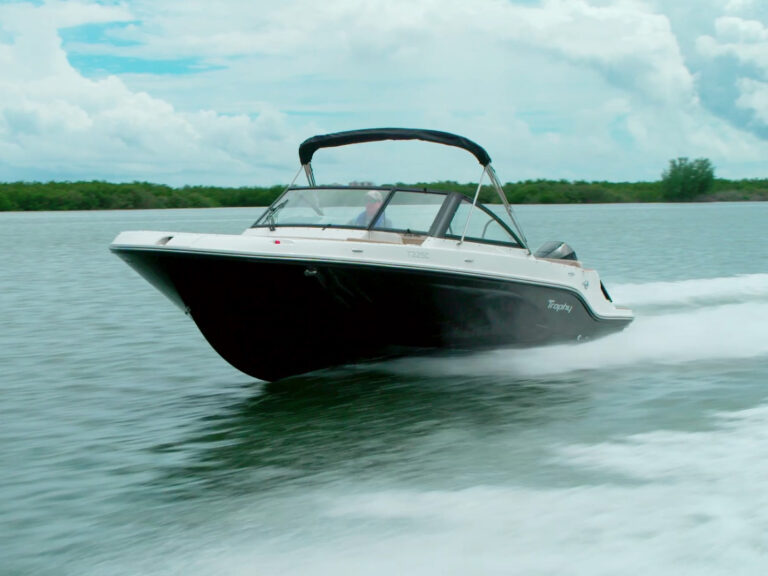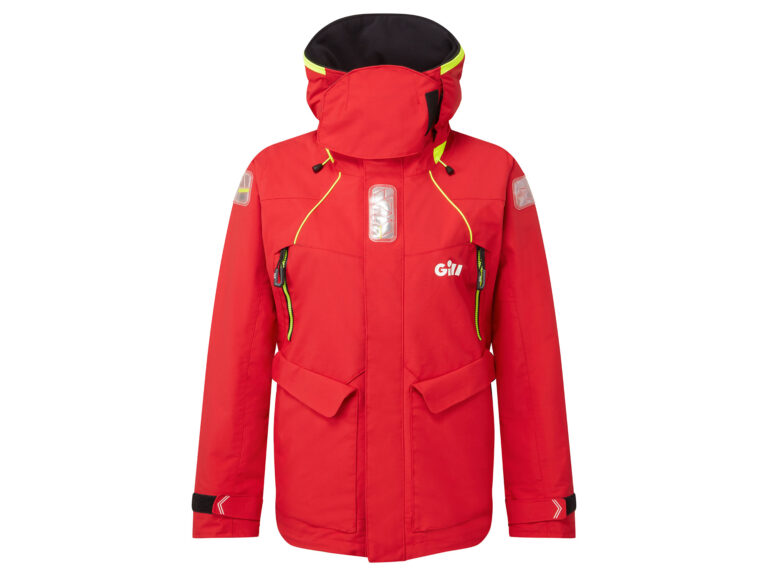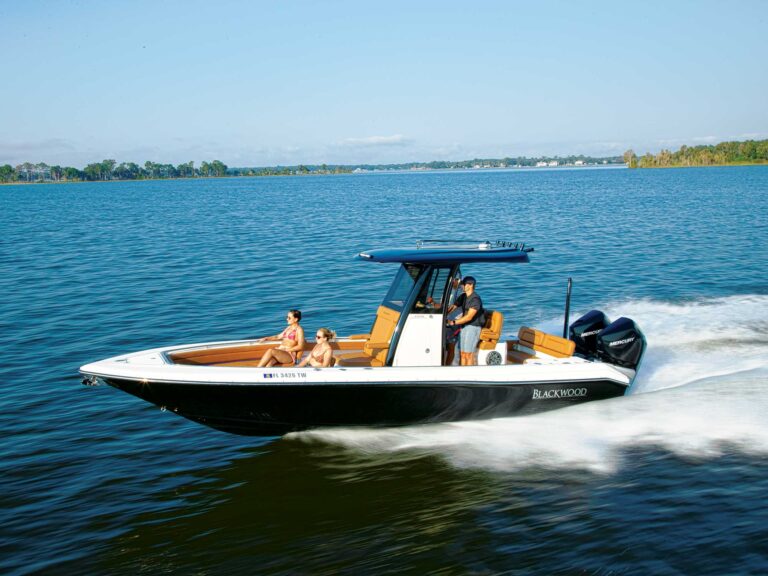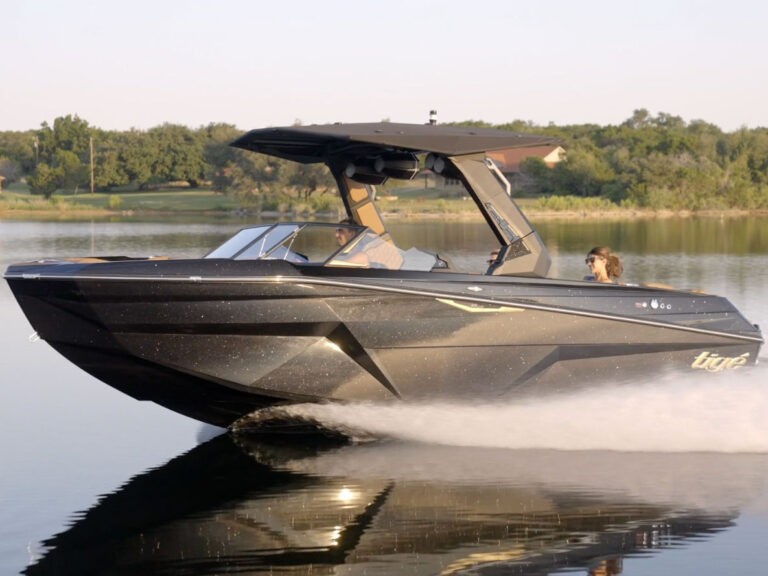
As triple- and quadruple-outboard-powered boats increase in popularity, choosing the best mix of propellers for such propulsion systems has grown in complexity. That’s because center engines sometimes require different propping than outside motors. This is particularly true when it comes to deep-V hulls.
Twin outboard setups use the same type and size of propeller for each engine, but in counter-rotating pairs. Triples and quads also employ counter-rotation (triples usually have a right-hand prop in the center), but it gets trickier from there.
With triples and quads, the drives for center engines on deep-Vs sit deeper in the water than do the outer engines. This allows all propellers to clear the bottom of the hull to maximize performance. To achieve this, such boats are usually equipped with XXL shaft (30-inch) outboard(s) in the middle, and XL shaft (25-inch) for motors on the outside. (For some models, custom-length gear-case spacers are used.)
“Yet it’s the way in which water emerges from under different places of a hull that can result in variations in propping,” says Ry Landry, product manager for Yamaha Outboards. “Water is parted along the keel, and that can result in greater aeration in water streaming along the centerline,” Landry explains. “There can also be through-hull fittings, transducers and other objects that increase aeration in the middle of the hull.
“This means that middle engines might need help in getting a better bite,” Landry says. “The outer propellers tend to get a cleaner stream of water than do center props, which can sometimes have a harder time grabbing water.”
The issue is more common with triple outboards, but can also occur with quads. “It really comes down to the shape of the hull and its hydrodynamics,” Landry says. Much of the time, there is no issue, meaning you can use the same type and size of prop for all engines.
To get an idea of how propellers might vary, we looked at Boating’s test of the Everglades 435 CC with quad Yamaha 350 hp V-8 outboards. All props were Yamaha Saltwater Series XL three-blade stainless steel, but the outside wheels carried a 19-inch pitch, while the center two were 21-inch pitch. On this boat, sporting 25 degrees of deadrise at the transom, slightly taller props are needed in the middle to help ensure a solid bite. The 435 CC achieved a top speed of 59.1 mph in our test of the boat.
Read Next: Improve Prop Efficiency
For an example of variable propping with triple outboards, we looked at our test of the Wellcraft 352 Fisherman powered by three Mercury 400 hp 400R Verados swinging Merc Revolution 4 stainless-steel four-blade props (see page 64). The outside motors were equipped with 18-inch-pitch props, while the center utilized a 19-incher to help the motor transfer power more efficiently. This deep-V hull, with 23 degrees of transom deadrise, topped out at 57 mph in our test.
Perhaps you are repowering a boat with triples or quads and want to know how to find the best props. “The first place to visit is your repower dealer, who should have a good idea based on experience in repowering the same or similar models,” Landry says.
You can also peruse our tests to see how the boats were propped when our editors ran them.

